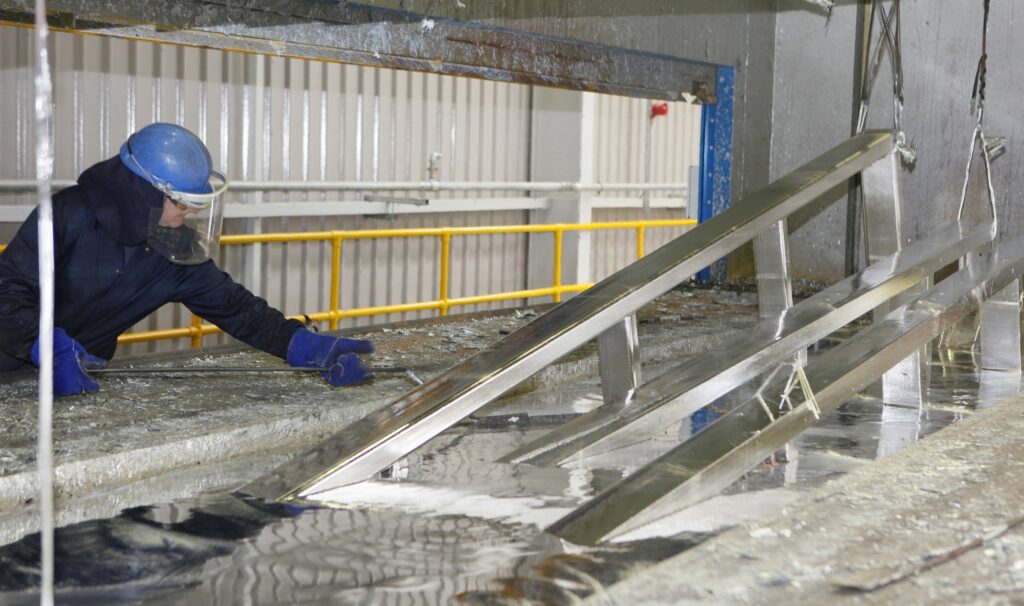For the customer who wants to increase the life of the materials we offer a galvanizing service for metal surfaces, the working process is available in two different versions:
- Electrolytic/galvanic galvanizing (known as cold galvanizing).
- Galvanizing by immersion in molten zinc (known as hot galvanizing).
Cold dip galvanizing:
- Process by which metal panels and structures obtain a light coating of zinc, transferred to them by means of a current flow, the articles are immersed in a bath based on zinc salts in which a controlled passage of current (electrolysis) transfers the zinc to the metals.
- To optimize the results and duration of electrolytic galvanizing, the articles are first chemically degreased, pickled in hydrochloric acid, degreased again by electrolysis and finally neutralized in semi-osmotized water.
- Once the preparatory treatments are completed, the articles are immersed in the galvanizing bath and the permanence in the latter varies according to the thickness to be deposited, after which they are rinsed again with semi-osmotized water and left to drip and dry.
Hot dip galvanizing:
- True metal coating process, the items are immersed in a bath of molten zinc at a temperature of about 450°C. which ensures a uniform and continuous coating that also penetrates cavities and joints, providing long-lasting protection against corrosion.
- The hot dip galvanizing treatment alone is sufficient to guarantee many years of resistance to corrosion, but being unsightly it can always be powder coated obtaining both the desired color and finish and not least, an exceptional duration, the only problem is certainly the cost of the entire operation.
- To optimize the results, it is essential to prepare the surfaces by removing contaminants such as grease, oil, rust or other coatings; pickling is carried out with chemicals and/or mechanical procedures to clean the surface of the materials from rust or oxides, then they are immersed in an ammonium chloride solution (fluxing) which further cleans the surface and promotes the adhesion of the zinc layer, then everything is rinsed and then left to dry and cool.
- Once the preparatory treatments are completed, the articles are pre-heated, dried and then immersed in the bath of molten zinc kept liquid at around 450-460 degrees and a zinc-iron alloy is created which constitutes a resistant coating, after which they are rinsed again with normal water and left to drip and dry.
Differences:
- Cold dip galvanizing is more cost effective, however, it offers less durable protection than hot dip galvanizing and must be followed by powder coating.
- Hot dip galvanizing is significantly more expensive but provides robust and long-term protection against corrosion. Furthermore, this process is recognized by the international standard EN ISO 1461, making it the preferred choice for a long-term maintenance-free project.
